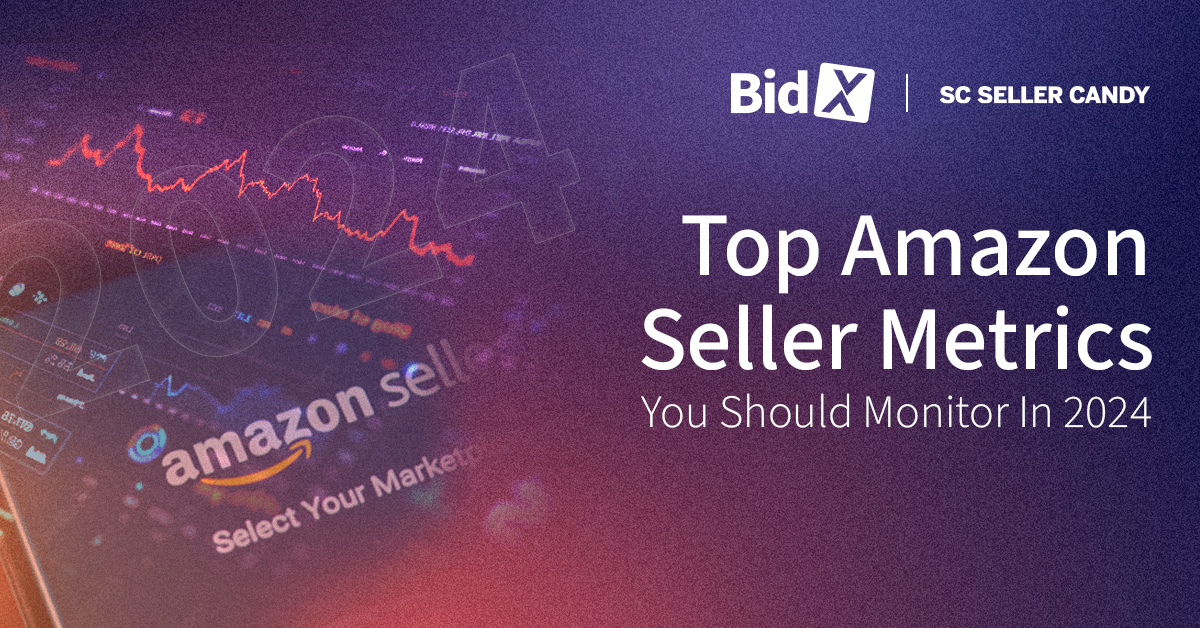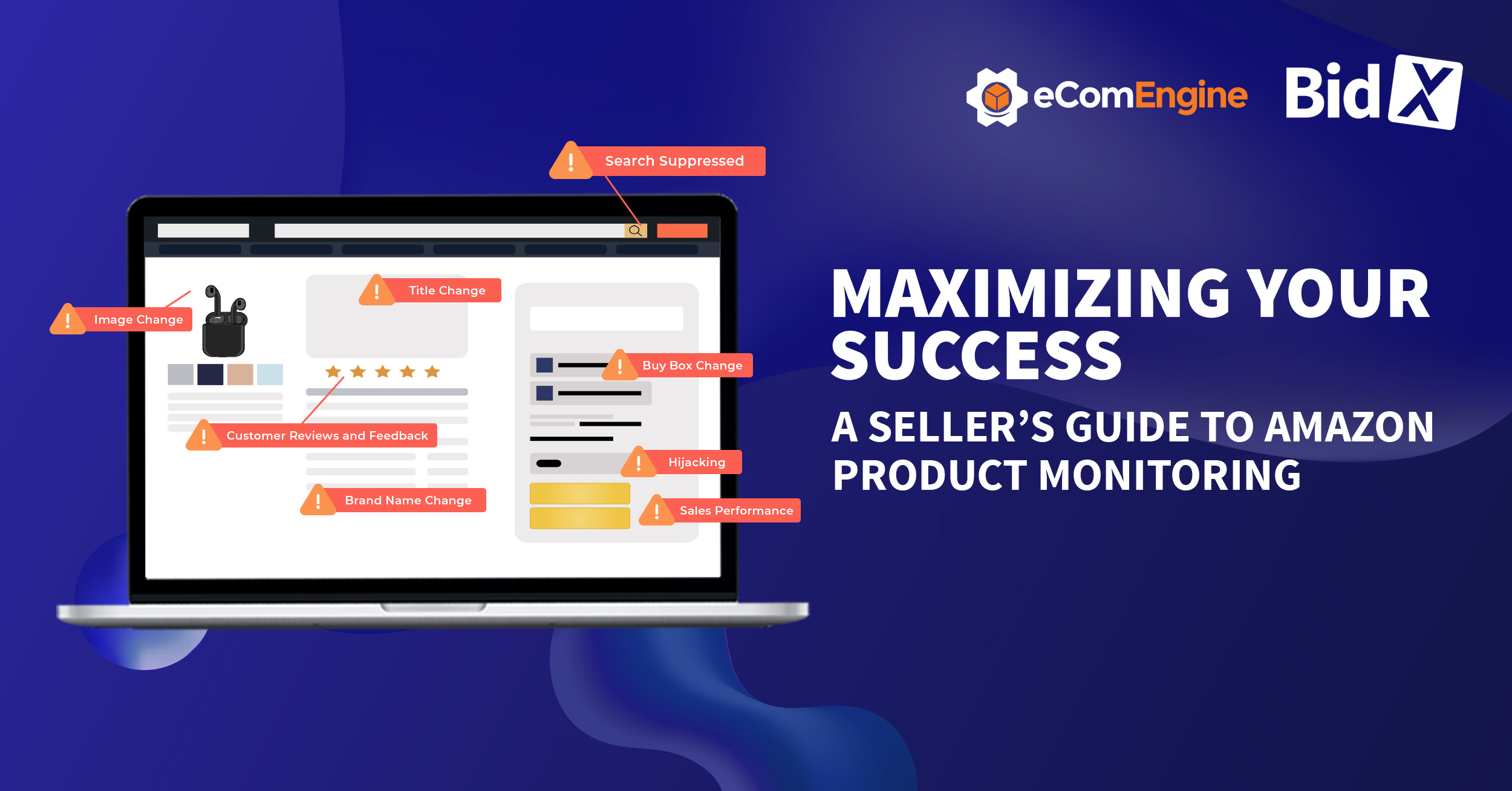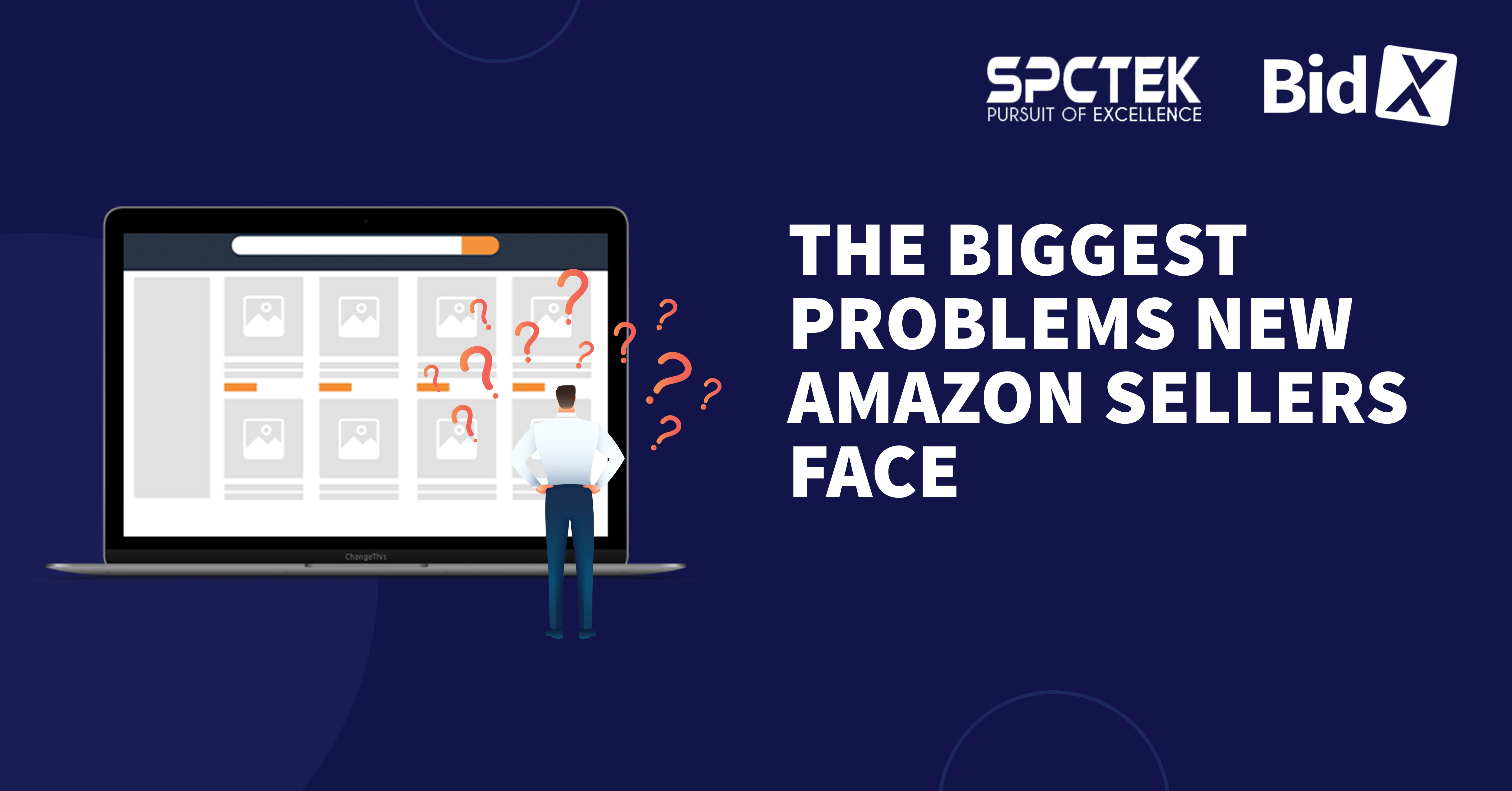Top Amazon Seller Metrics You Should Monitor In 2024
The Amazon Seller Report of 2024 drops some eye-opening stats:
- A solid 35% of small to medium-sized Amazon sellers start making profits within six months.
- On the flip side, a whopping 77% of bigger brands and retailers hit their profit goals on Amazon in just three months.
Thinking about why there's such a big difference? It boils down to one thing: Staying sharp on how your Amazon business is performing. Let's dive into the must-watch metrics for every brand and third-party seller. Keeping tabs on these will not only boost your sales but also keep your customers coming back for more.

Why You Need to Monitor Amazon Seller Metrics
Amazon sets specific criteria and standards to evaluate the performance of brands and third-party (3P) sellers. This system helps brands pinpoint improvement areas and make informed decisions to enhance their operations.
Failing to meet Amazon’s benchmarks consistently can lead to harsh consequences. Amazon may enforce corrective measures such as penalties, account suspension, or even deactivation.
Therefore, by consistently monitoring Amazon seller performance metrics, brands can:
- Assess overall sales to identify the most profitable products.
- Refine product listings to enhance the customer shopping experience.
- Manage inventory effectively to ensure adequate stock levels and meet customer demand.
- Gauge customer satisfaction and uphold a strong brand reputation.
Top Amazon Performance Metrics For Sellers
Enlisted below are the top Amazon seller performance metrics every brand must monitor.
Buy Box Percentage
Ever seen the "Add to Cart" box on the right of an Amazon product page? That's the Buy Box, and snagging it is key. Why does it matter? Well, 83% of Amazon's sales are made through this box.
What if You Don't Secure the Buy Box?
If you don't win the Buy Box, most customers won't even see your product as an option, which likely means missing out on sales. It's vital to maintain a Buy Box win rate over 90% to prevent a drop in sales.
Common Reasons for Losing the Buy Box
A primary culprit for losing the Buy Box is violating Minimum Advertised Price (MAP) policies. If your pricing falls below the set minimum, you risk losing the Buy Box. That’s where MAP monitoring tools come into play. Software like MetricsCart, Wiser, and MAPTRAPP can help you track compliance and boost your chances of winning the Buy Box.
Other Factors Affecting Your Buy Box Win Rate
- Negative feedback from customers
- Overpricing your products
- Lacking detailed product information
Product Ranking
Most users visit Amazon with a clear intention to purchase. With numerous options available for each search query, the majority of them stick to the first one or two pages. Indeed, studies show that 70% of Amazon users don't go beyond the first page of search results.
How Can You Secure a Top Position?
Sales are the key. Higher sales lead to higher rankings, creating a virtuous cycle where top-ranked products continue to sell more.
Launching a New Product?
To get a new product noticed, brands can use tools like Amazon PPC campaigns, sponsored product ads, and sponsored brand ads to boost their visibility.
How to Improve Your Organic Rankings?
- Incorporate relevant keywords into your product titles, descriptions, and features.
- Keep your pricing competitive.
- Ensure you always have enough stock.
- Aim to increase your number of 4-star and 5-star reviews.
Order Defect Rate
The Order Defect Rate (ODR) is crucial for Amazon sellers—it tracks the percentage of orders that resulted in unhappy customers or defective products. Calculate it by dividing the number of problematic orders by the total orders during a specific period.
Why Monitor Your ODR?
Amazon uses ODR to gauge your customer service quality. It includes issues like:
- A-to-Z Guarantee claims
- Credit card chargebacks
- Negative reviews (1 or 2 stars)
Consequences of a High ODR
Keep your ODR under 1%. If it exceeds this, you risk losing the Buy Box, receiving a warning, and potentially facing account suspension.
Managing your ODR
Proactively address all customer feedback, and A-to-Z claims to identify and rectify service gaps. Also, Amazon will protect sellers against fraudulent claims.
Pre-Fulfillment Cancellation Rate
This rate shows how often sellers cancel orders before shipping. It’s calculated by dividing the number of pre-shipment cancellations by total orders in a week. It's a critical Amazon KPI.
Why Should You Care?
Cancellations often occur if sellers run out of stock, leading to customer frustration and potential damage to your reputation. If your cancellation rate exceeds 2.5%, Amazon may suspend your account.
How to Manage It?
Effective inventory management is key. Utilizing software to monitor stock levels can help you minimize cancellations.
Keeping your pre-fulfillment cancellation rate low is crucial for customer satisfaction and maintaining a healthy Amazon presence.
Unit Session Percentage
Unit session percentage measures how many product page views convert to sales. It's a crucial metric, showing the effectiveness of your product listings.
How Does It Work?
It calculates sales per unique visitor per session, where a session is any visit to your product page.
Significance of High or Low Rates
A high rate (7-15%) suggests your product is popular and frequently purchased. A low rate indicates potential issues with your listing—be it unclear descriptions, poor reviews, or pricing issues.
Improving Your Rate
Focus on enhancing your product listings. Check if your descriptions are clear, gather better reviews, and adjust your pricing strategy.
Late Shipment Rate (LSR)
Late Shipment Rate (LSR) measures the percentage of orders shipped later than the promised date, applicable only to seller-fulfilled orders.
Impact of High LSR
A high LSR can spoil customer experiences, leading to negative reviews and chargebacks. It's essential to maintain an LSR below 4%.
Consequences of Exceeding the Limit
Exceeding this limit can trigger account deactivation. If notified by Amazon Seller Control, sellers must submit a corrective action plan for reactivation.
Buyer-Seller Contact Response Time (CRT)
Buyer-Seller Contact Response Time (CRT) is an Amazon performance metric that tracks how quickly sellers respond to customer queries. A real person must make all responses within 24 hours, even on weekends.
Why is Fast Response Time Crucial?
Responding slowly can hurt your customer service reputation and negatively affect your product ranking.
Fast response times show customers you value their concerns and can lead to higher satisfaction and better ratings.
Perfect Order Percentage (POP)
Perfect Order Percentage (POP) measures how well a company fulfills customer expectations by delivering orders correctly and on time.
What Impacts POP?
Several factors can drag your POP down, including:
- A-to-Z Guarantee Claims
- Buyer messages
- Cancellations
- Chargebacks
- Late shipments
- Negative feedback
- Refunds
Why Is Maintaining a High POP Important?
Suppose a seller’s POP drops below 95% and fails to keep Order Defect Rates below 1%, Pre-fulfillment Cancel Rates below 2.5%, and Late Shipment Rates below 4%. In that case, Amazon may intervene for not meeting performance standards.
Inventory Performance Index (IPI)
The Inventory Performance Index (IPI) is a crucial metric for Amazon sellers that assesses how effectively you manage your inventory and keep up with demand. This score ranges from 0 to 1000.
What do Different IPI Scores Mean?
An IPI score above 450 suggests your Fulfilled by Amazon (FBA) inventory is performing well. Scoring above 550? You're a top performer! But watch out—if your score dips below 350, you might face extra storage fees or restrictions.
Factors Influencing Your IPI
Your IPI is influenced by:
- Excess inventory
- Standard inventory levels
- Sell-through rate
- In-stock inventory status
Why is a Good IPI Score Important?
A strong IPI helps you maintain just the right amount of inventory, avoiding both surplus and stock-outs. Managing this balance is key to optimizing your sales and avoiding penalties.
Account Health Index (AHI)
The Account Health Index (AHI) evaluates your performance as an Amazon seller by checking how well you adhere to Amazon's standards and policies.
What Does AHI Consider?
- Product policy compliance
- Order defect rate
- Shipping performance
- Customer feedback and reviews
- Cancellation rate
Why is a Good AHI Important?
A low AHI can lead to account suspension, so keeping your performance metrics in check is critical.
Your Next Steps to Amazon Success
Closely monitoring your Amazon seller metrics is essential to driving success and staying competitive. By paying attention to critical metrics like Buy Box percentage, product ranking, ODR, and inventory performance, you can make data-driven decisions that improve your sales and ensure customer satisfaction and loyalty.
If you're looking to simplify managing your Amazon business and handling Seller Central tasks, Seller Candy is your go-to solution. Their expert team will manage your tasks efficiently, freeing you to focus on scaling your business. Don't let Seller Central challenges hold you back—Get your free quote today!






